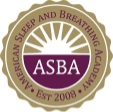More than half of all obstructive sleep apnea patients are deemed “positional.” That is, they stop breathing twice as many times per hour when they lie on their backs, in the supine position, than when they lie on their sides.
Sleeping on your back can worsen your sleep apnea symptoms because gravity causes your tongue to fall back against your throat, blocking the passage of air to your lungs.
Positional Sleep Therapy
Positional sleep therapy is a straightforward practice that can dramatically improve the quality of your sleep if you suffer from mild obstructive sleep apnea or snoring. In many cases, simply changing the position in which you sleep can reduce snoring and the number of times you stop breathing per hour (measured by the apnea-hypopnea index, AHI).
Many companies sell products designed to keep you from rolling over in your sleep. One effective design is a shirt with pockets on the back filled with inflated plastic balloons. When you begin to roll over, the pressure of the balloons will cause you to roll back onto your side.
There are also many positional therapy techniques that you can easily try without having to buy products:
- Sleep with a full backpack
- Attach a sock filled with tennis balls to the back of your shirt
- Elevate your head and upper body at a 30 to 60 degree angle
Positional Sleep Therapy and Provent
Positional sleep therapy effectively treats mild sleep apnea and snoring, but for patients with more severe sleep apnea, positional therapy is not enough. Using treatments in combination may be a more effective way to lessen the severity of your sleep apnea and improve the quality of your sleep. Combination therapy is a common medical practice that involves using two or more treatments or medicines to get a condition under control. In combination with positional therapy, Provent therapy could be a good option.
Provent is a pair of disposable, FDA-approved valves that attach to your nose and use the power of your breath to keep your airways open. The valves let air in but let only a fraction out, creating expiratory positive airway pressure (EPAP). Provent uses air pressure like CPAP but does not require the same frustrating machinery. It has been shown to reduce snoring and apneas, and is a good option for patients with mild to moderate sleep apnea or who are non-compliant with CPAP.
Why Combination Therapy
Using positional therapy and a device like Provent could give you a significantly more peaceful night’s sleep than using one therapy alone. Sleeping on your side will position you so that your airways are more open, and Provent will create more pressure in your airways, opening them so that you can sleep and breathe easily.
To find out more about alternative treatments to mild and moderate sleep apnea, including positional sleep therapy, please call our experienced sleep dentists in the Chicago area at 1-847-533-8313 today to schedule your personalized consultation.






